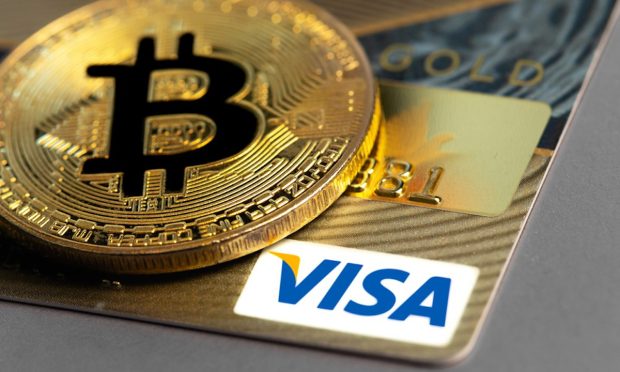Issuers Rush To Meet Consumer Demand For ‘Cash Back’ Crypto Cards, Despite Volatility And Risk

It’s not quite cash back – not really as liquid as real cash – but the cryptos-as-rewards premise may be enough to boost those digital offerings more fully into mainstream commerce.
Or maybe not – if volatility is a key determinant.
The desire to use cryptocurrencies in retail settings, as a payments choice for everyday financial use, is in place. Two months ago, PYMNTS published research showing that though roughly 84 percent of consumers have never owned cryptocurrencies, which leaves about 16 percent of consumers who have owned and/or do own them.
Extrapolating the responses from the more than 8,000 users PYMNTS surveyed, that equates to tens of millions of consumers. About 57 percent of those who have held cryptos have made at least one purchase with them in the past year. Of that tally, roughly a quarter have used crypto to buy groceries and roughly a quarter would buy electronics – and, overall, 57 percent would spend their bitcoin and other cryptos over a broad swath of product categories.
More recently, as detailed in the Cryptocurrency Payments Playbook: Cryptocurrencies Gain Momentum as a Payment Option (a PYMNTS and BitPay collaboration), 59 percent of current or former cryptocurrency holders would be “very” or “extremely” interested in using crypto to make payments if they could obtain discounts. That same percentage, 59 percent, would be interested in transacting with crypto if loyalty/rewards were in the offing.
Increasingly, cards that “earn” crypto as part of a program that rewards users for spending on those cards are popping up. At a high level, the concept is that users grow ever more comfortable with redeeming rewards – old hat, so to speak, with traditional cards/spending – but with cryptocurrency as a redemption option. The more one spends and taps into that option, the more crypto accrues in a holder’s account, typically via crypto exchange.
The Cards Cometh
There is any number of cards debuting in the market at present. In just a few examples profiled here in recent weeks, Upgrade, Inc., has announced its Upgrade Bitcoin Rewards Card, which – like the firm’s other cards – turns every balance into a fixed-rate installment plan, with holders earning 1.5 percent back in bitcoin on their payments. In May, Brex, which focuses on business customers, started allowing users to redeem their reward points for bitcoin and Ethereum. And Visa, back at the end of 202o, said it had linked with BlockFi to launch a credit card that offers bitcoin rewards, with 1.5 percent cash back on all purchases, which could immediately be converted to bitcoin.
Crossing The $1B Mark
Visa said earlier in July that consumers had spent more than $1 billion across crypto-linked cards in the first six months of this year alone.
The cards are among the most recent entrants into an ecosystem that is still taking shape – where familiarity with rewards is the hoped-for springboard to adoption. But then again, some of the same hallmarks of cryptos in general also apply to cryptos tied to spending and to rewards … namely, volatility.
(Also, bitcoin transactions still take a while to process, which may be a point of friction at the actual point of sale depending on the use case.)
As to the volatility: The value of bitcoin, Ethereum and all of these digital coins can gyrate wildly, which impacts the value of the holdings gleaned through the rewards (and thus their ultimate “spendability”). It’s not too far-fetched to think that, say, an 8 percent “points’” reward on spending, tied to crypto, could be winnowed down to a much smaller percentage should the markets take a dip.
Read More On Cryptocurrency:
- Tether and Telegram Join Forces to Enable Crypto Payments
- Kraken Acquires TradeStation Crypto to Expand Regulatory Licensing in US
- This Week in Web3: Bitcoin Halving, Stablecoins, Bankman-Fried
- Crypto.com VC Arm Cautious of Outsized Valuations
